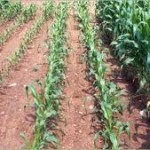Plants always show with utmost accuracy if the soil has the required nutrients for their normal growth or it does not have any.
Any deficiency in nutrients, plants usually manifest them by the yellowing of leaves, growth stunting or in severe cases, necrosis or even death of plants.
According to the Philippine Rice Research Institute (PhilRice) at Los Baños, Laguna the minus one element is an old forgotten method of identifying nutrient limitations. It is more appropriately called a technique rather than a technology.
The method is called minus one element technique because each fertilizer formulation is done in seven planting pots, including that of the complete, it has to exclude either one of each of the elements enumerated and label the minus element in each pot separately: minus nitrogen (-N), minus phosphorus (-P), minus Potassium (-K), minus sulfur (-S) and minus copper (Cu).
An example is that, the pot is labeled (- N), it means that the plant subsists only on the available nitrogen (N) on the soil. The performance of the rice plants will determine whether the soil has enough of these nutrients.
Grow the plants up to 45 days after sowing or transplanting , on the 14th day you start observing the plant growth specifically on nutrient deficiency symptoms.
Compare the growth of the plants in each pot with that of complete treatment or formulation that must be healthy. If the growth of the plant in all pots is as healthy as that of the complete treatment, the soil must have sufficient nutrients.
After 45 days, compare the biomass for each treatment with that of the complete. If the biomass of the treatment is less than 80 percent of that in the complete, the nutrient represented in the label is deficient. The biomass is the dry weight of the rice plant excluding the root.
Taking reference from this premise, the minus one element technique provides a low cost, easy and reliable method in soil nutrient determination in actual field conditions.
As early as 14 days after transplanting, the rice plant may show nutrient deficiency symptoms, including those which are not detected by chemical analysis.
According to Dr. Teodula M. Corton, program leader of the Rice for Adverse Environments Program at the Philippine Rice Research Institute (PhilRice), that in some instances results from both chemical analysis and the minus one element technique differs each other.
The chemical analysis may show above critical levels of a soil nutrient while the minus one element technique may show deficiency of the same element. According to Corton, this is because the availability of some soil nutrients is affected by flooding or submergence.
One example, is zinc (Zn), which is highly sensitive to flooding. Flooding produces biochemical reactions whose products interact with Zn. This interaction may transform Zn into unavailable forms through precipitation, absorption, or complex formation.
Thus, soil chemical analysis may detect sufficient amounts of Zn because it uses air dried soil but in field conditions where the soil is flooded, it becomes deficient.
The minus one element technique is developed by researchers at PhilRice, Los Baños which is a good alternative to those who have no access to soil laboratories.
The procedure is easy, no need for a soil laboratory expert to conduct the experiment and interpret the results. It can be conducted in the field or in your backyard.
The best time to conduct the test is at the start of land preparation so that you will have enough time to adjust fertilizer application during transplanting.

